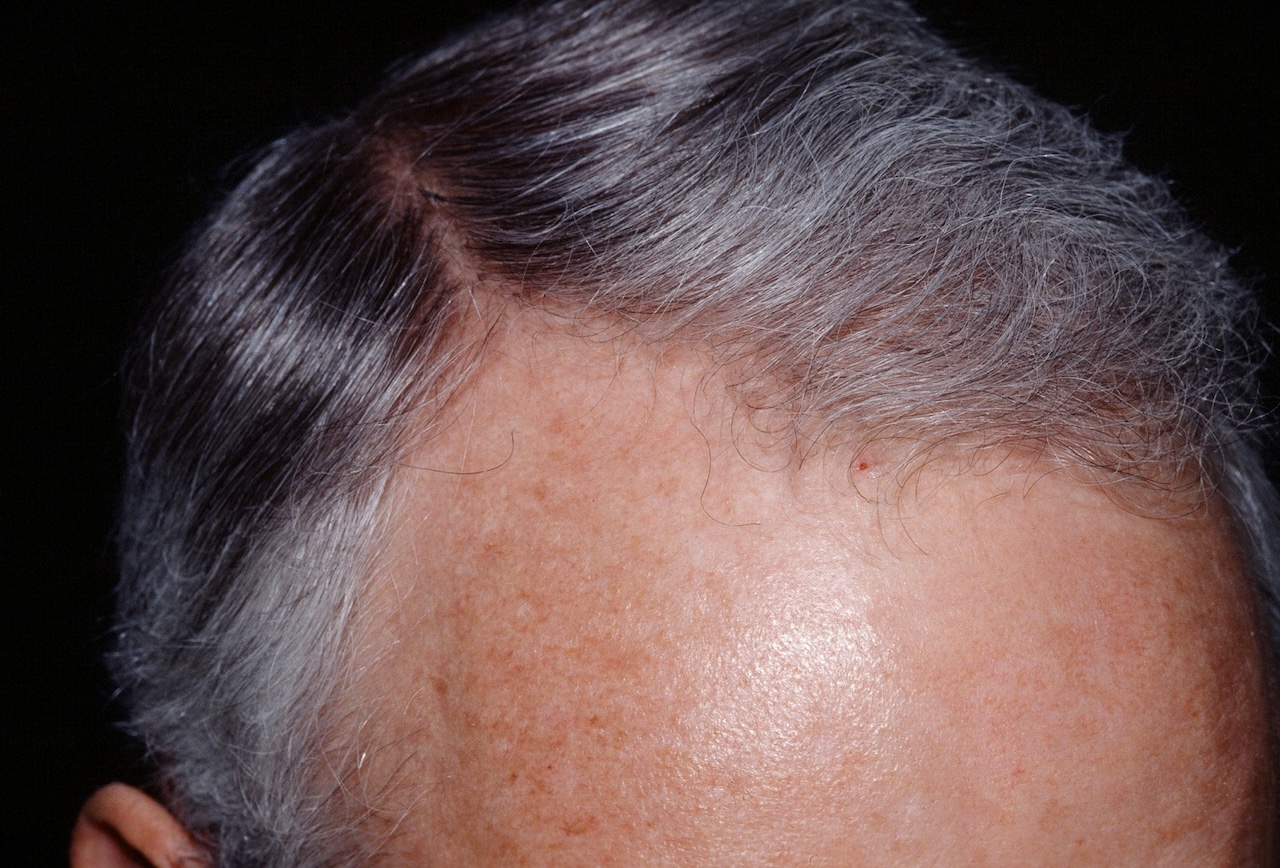
A 33-year-old man comes to you with bitemporal receeding hairline. After discussion of the treatment options, he decides to start oral minoxidil 2.5 mg/day and oral finasteride 1 mg per day.

A 33-year-old man comes to you with bitemporal receeding hairline. After discussion of the treatment options, he decides to start oral minoxidil 2.5 mg/day and oral finasteride 1 mg per day.
Androgenetic Alopecia in a man (AAM) causes the typical bitemporal recession (receeding hairline) and a balding vertex (bald spot). The hairs gradually miniaturize and finally are lost. Typical onset is anytime after age 30 although it may occur earlier.
The hairline gradually moves backward, forming a characteristic "M" shape as hair is lost from the temples and forehead (bitemporal recession)]. The hair on the vertex also thins, leading to a bald patch or complete baldness in the crown area. The terminal (thick, pigmented) hairs gradually convert to vellus (thin, fine, and less pigmented) hairs as the condition progresses.
Homepage | FAQs | Use of Images | Contact Dr. White